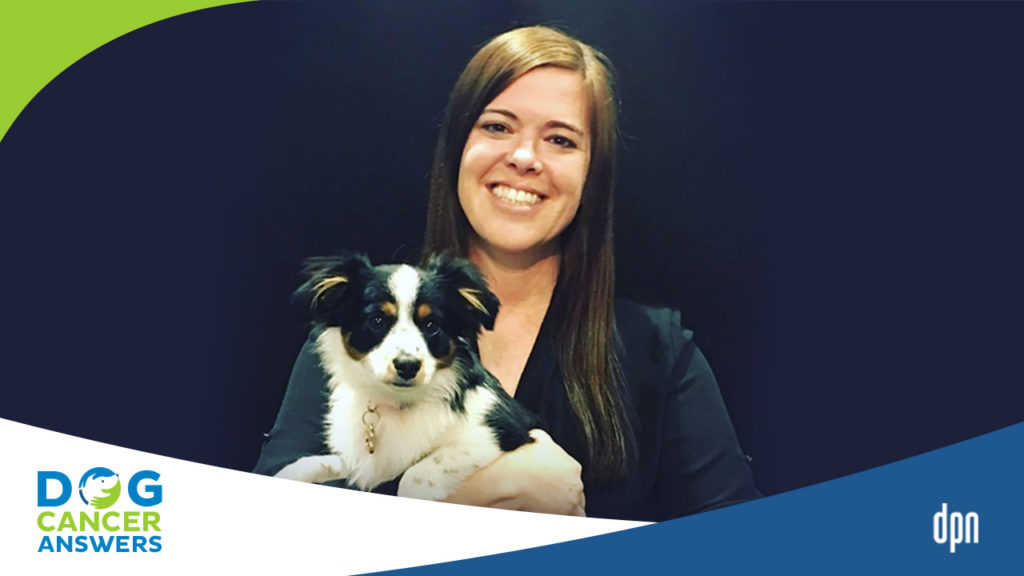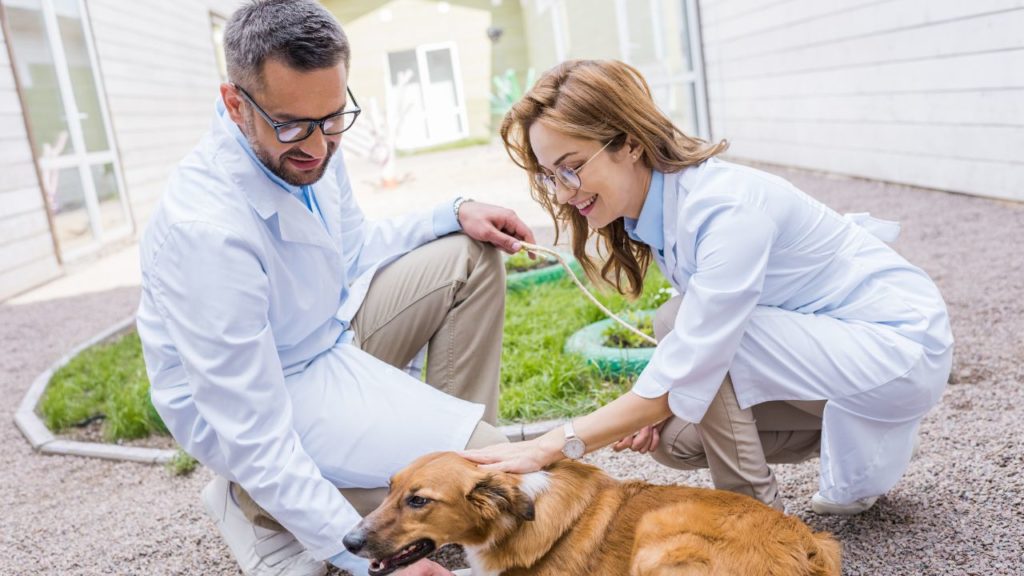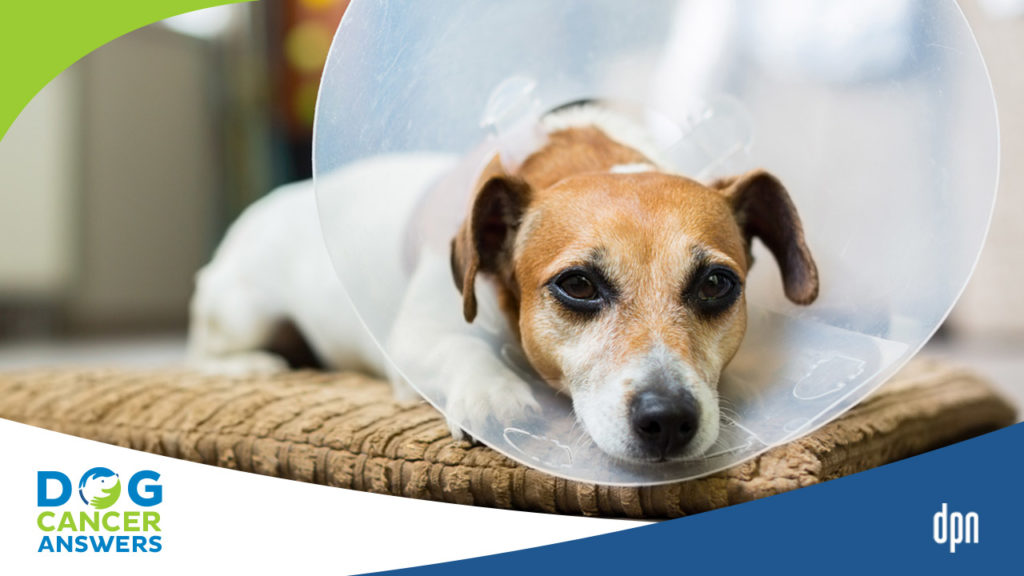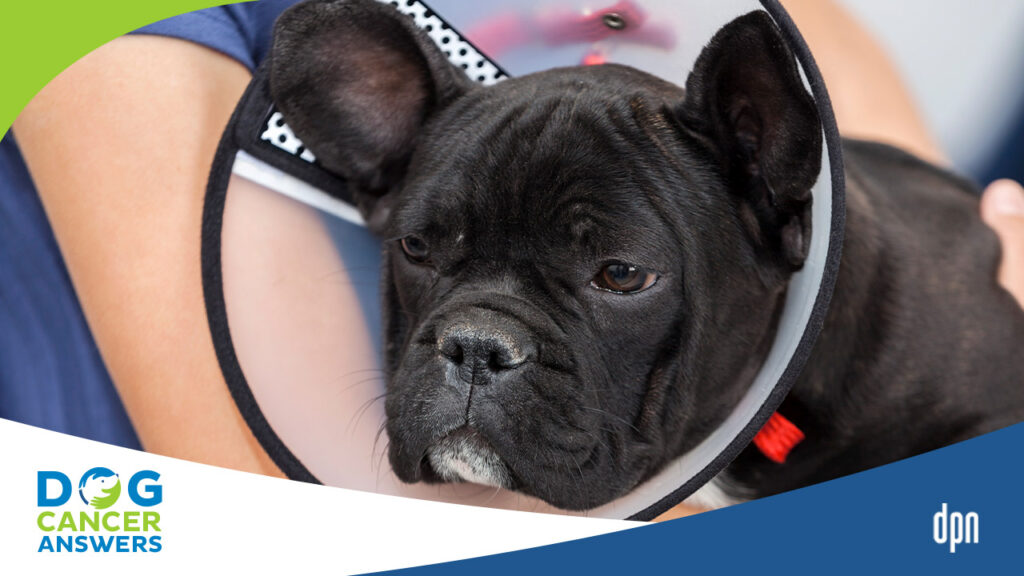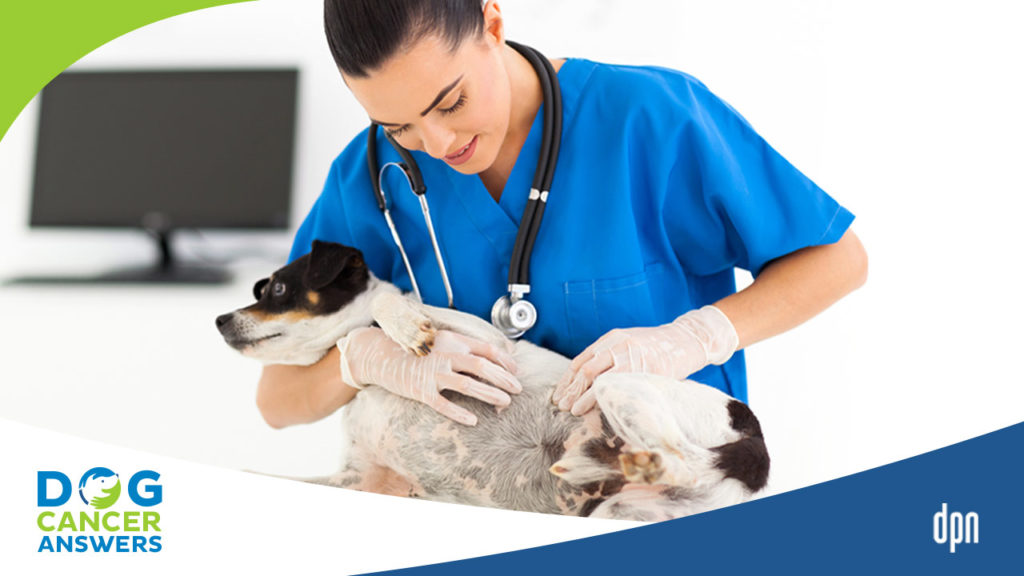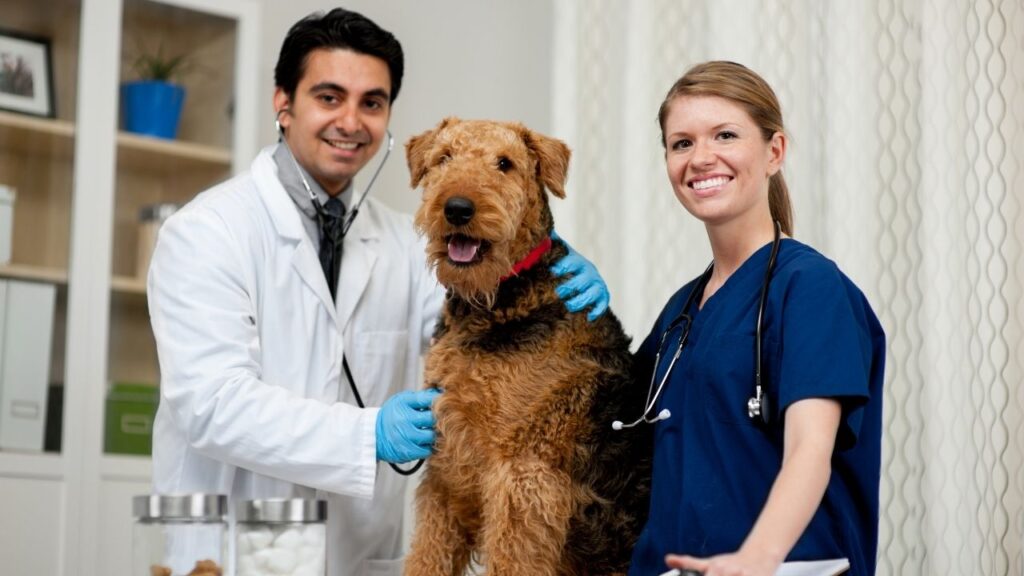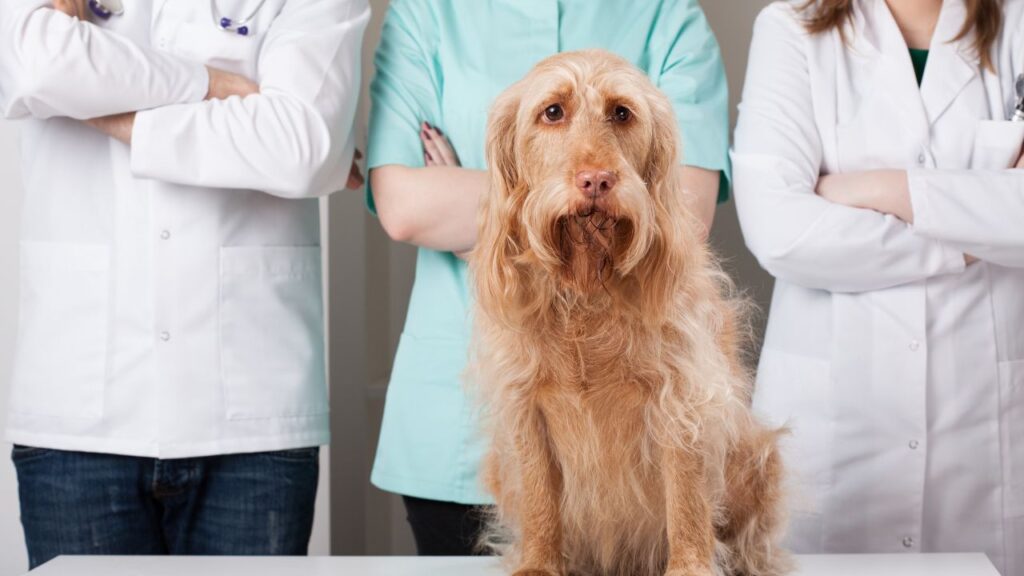Meet the Heroes Who Fight Dog Cancer Without a Veterinary License
Sometimes it feels like it's just you and your dog fighting cancer, but that's not true. Your healthcare team members are all cancer fighters! Meet the many folks dedicated to your dog's health who aren't licensed veterinarians.
Key Takeaways
- Veterinarians do not handle most medical procedures in a veterinary clinic.
- Veterinary technicians most often draw blood, examine samples, and administer medicines.
- Licensed veterinary technicians have completed a collegiate training program and passed a national exam. They are equivalent to nurses in human medicine: they cannot legally diagnose illness or prescribe medicine, but they are medical professionals.
- Some veterinary technicians undergo advanced training and become specialists. Oncology techs are an incredible resource for dogs with cancer.
- A veterinary practice’s assistants and front office staff are critical for triage and assisting with your dog’s care.
- Other medical professionals, like pharmacists, are also there to support you and your dog.
Dog lovers sometimes assume veterinarians do all the work of a veterinary clinic. But that’s not true. Many non-veterinarian healthcare team members work together with the veterinarians. This article will orient you to the many medical professionals you’ll encounter on your dog’s cancer journey.
Veterinary Technicians
Veterinary technicians are an integral part of the veterinary healthcare team; without them, veterinarians would be unable to get their work done.
Veterinary Technicians are the “Nurses” of Animal Medicine
Just like doctors have nurses, veterinarians have veterinary technicians. And just like nurses do most of the “hands-on” care for human patients, veterinary techs do most of the “hands-on” care for dogs.
Veterinary technicians provide nursing care and help bridge the gap between the client and the veterinarian. And they are needed more than ever.
According to the American Veterinary Medical Association (AVMA), the percentage of U.S. households that own at least one dog increased from 38% to 45% between 2016 and 2020.1 With more pets needing care, many veterinary hospitals are utilizing veterinary technicians more often to maintain standards of patient care.
Medical Credentials for Veterinary Technicians
Veterinary technicians complete a two-year collegiate-level training program and then must pass a national exam to obtain licensing credentials.
The exact credentials vary by state – for example, New York has Licensed Veterinary Technicians (LVT), Pennsylvania has Certified Veterinary Technicians (CVT), and Hawaii has Registered Veterinary Technicians (RVT). The general term for this profession is veterinary technician, often shortened to “vet techs.”
Not all states have the same requirements for vet techs. Some states specify what tasks a vet tech can legally perform in their State Practice Act. Those tasks are then protected – meaning that only individuals with the proper training are legally allowed to perform those tasks. This helps to protect your dog by ensuring the technician can perform medical tasks safely and effectively.
Other states allow for on-the-job training, which can be inconsistent. These individuals may or may not be able to get credentials.
Not sure what the rules are in your state? The American Association of Veterinary State Boards lists regulated and non-regulated states and jurisdictions and the credentials a technician can carry in your state.
Veterinary Technician Specialists
Some technicians choose to become specialized in areas such as anesthesia, emergency care, and oncology. To become a veterinary technician specialist (VTS), veterinary technicians undertake a challenging two-year program, with each academy responsible for passing and testing its members.
Technicians with a VTS in oncology are members of the Academy of Internal Medicine for Veterinary Technicians. This select group of veterinary technicians can provide more specialized care, such as understanding drug pharmacology and side effects (important when dealing with chemotherapeutic agents).
To earn a VTS in oncology, applicants must demonstrate proficiency in an extensive list of oncology-specific tasks and knowledge areas, submit case reports, and pass an additional exam.
There are only about 40 VTS in oncology in the U.S. right now, but these individuals are valuable resources. They support veterinary oncologists and our dogs with cancer with knowledge, compassion, and skill.
Jenny Fisher is a Registered Veterinary Technician with a specialty in oncology with beautiful stories of hope to share.
Veterinary Technicians Already Perform Many Medical Tasks
Veterinary techs are responsible for everything happening in the clinic involving animal care. In fact, most things that happen in a veterinary clinic are performed by techs. By law, the only things a veterinary technician cannot do are:
- diagnose a problem
- prognose the severity of that problem
- surgery
- prescribe specific medications
However, veterinary technicians and assistants can perform every other task in the veterinary hospital!
For example, when your dog needs surgery, a veterinary technician may be the one:
- running the bloodwork
- placing the IV catheter
- monitoring your dog under anesthesia
- comforting them in recovery
While your veterinarian sees other patients in appointments, their technicians stay with and monitor your dog in the hospital.
Licensed Veterinary Technician Kate Basedow takes you "behind the scenes" of a dog cancer surgery.
Veterinary Technicians are Communicators
Veterinary technicians are also an essential part of the communication link when checking patients’ progress. They usually speak to you in plain language, not medicalese. That’s why they may be the person to relay your veterinarians’ advice to you.
You may think, “Why isn’t the veterinarian talking to me?” but in reality, veterinary technicians may be the best communicators of all the non-veterinarian healthcare team members. They work so closely with your dog, usually more so than the veterinarian!
For example, suppose you are curious about how long your dog came around after anesthesia. In that case, the tech who was there with your dog will know that off the top of their head … while your veterinarian might need to consult the record or ask their tech.
Veterinary Assistants
All other staff helping to assist the veterinary team (doctors and credentialed techs) at a veterinary hospital are veterinary assistants.
Veterinary assistants typically do not have formal training, although, in some areas, you can become a certified veterinary assistant via online certification and classes.
Like veterinary technicians, vet assistants cannot diagnose, prognose, prescribe, or perform surgery.
Also, if your state regulates veterinary technicians, there will be tasks that vet assistants are legally prohibited from doing. For example, in New York, a vet assistant cannot draw blood or give vaccines, because those are tasks that require a license.
The typical responsibilities of a vet assistant include patient restraint, walking and feeding hospitalized patients, bathing when needed, cleaning, assisting with surgical prep, and assisting with other diagnostic procedures.
Front Office Staff
Veterinary front office staff, often called Customer Service Representatives (CSRs), bridge the gap between the clients and the veterinary clinic. Often, they are the first healthcare team members clients interact with, and so they are the face of the clinic.
CSRs are often trained in telephone triage to ensure every pet is seen within an appropriate timeframe. For example, they are trained to ask questions so they will know when a pet may need to be seen on an emergency visit or if the issue can wait until the next available appointment.
They are also incredibly compassionate and build strong relationships with pets and clients. The CSRs may make follow-up and check-in calls as they have more time to spend with each client than the doctor and veterinary technicians. If they cannot answer your questions, they can get answers from the veterinarian or technician and relay them back to you.
CSRs are also often trained on all available payment options, so when things get expensive, they can recommend pet insurance or financing options to fit your family and situation best.
Vet Tech Pain Specialist Tasha McNerney explains behavioral changes you might see if your dog is experiencing chronic pain, pain management medications and treatments.
Pharmacists
Most of us don’t think of our local pharmacist as a non-veterinarian healthcare team member, but they are. Along with your veterinarian, your pharmacist can help you understand the medications your pet has been prescribed and all possible side effects.
Because of their advanced training in medicines, their uses, and their interactions, your local pharmacist has an in-depth understanding of pharmaceuticals and the plants they are often derived from.
Because many pet supplements are not subject to FDA (Food and Drug Administration) approval and testing, your local pharmacist can sometimes recommend brands of nutraceuticals that have better manufacturing and efficacy standards.
For instance, there are many CBD products on the market. Your pharmacist can help you understand a certificate of analysis (COA) on these products and why products that don’t have a COA should be used with caution.
A pharmacist can also work with your veterinarian to suggest generic options for drug therapies or different dosing options to save you money over time.
Like other veterinary staff, a pharmacist cannot diagnose or prognose, but they can work with you to create the best outcomes for your pup.
Friends and Family Members
Friends and family might not seem like they fit in this category, but as anyone who has ever cared for a dog with cancer or recovering from surgery can tell you, they are integral to this process.
Caregiver fatigue is a real phenomenon whether you are caring for an elderly parent or a canine recovering from hemangiosarcoma surgery who needs to go outside and you live on the 12th floor of an apartment building with no outdoor space (yes, from experience!).
It can be hard to balance all the medications, supplements, physical therapies, and appointments your dog needs and still carry on with your life. Friends and family are essential in helping you keep it all together.
For example, a neighbor might pick up your dog’s medication when they run to the pharmacy, or maybe your partner can watch the kids so you can do some quiet range of motion exercises with your older dog.
Leaning on your support network will be necessary, not only to improve the quality of care your pet receives but also to help support your mental health.
- Scott, R. Nolan. Pet ownership rate stabilizes as spending increases. Published October 26, 2022. Accessed December 09, 2022. https://www.avma.org/news/pet-ownership-rate-stabilizes-spending-increases
Topics
Did You Find This Helpful? Share It with Your Pack!
Use the buttons to share what you learned on social media, download a PDF, print this out, or email it to your veterinarian.
